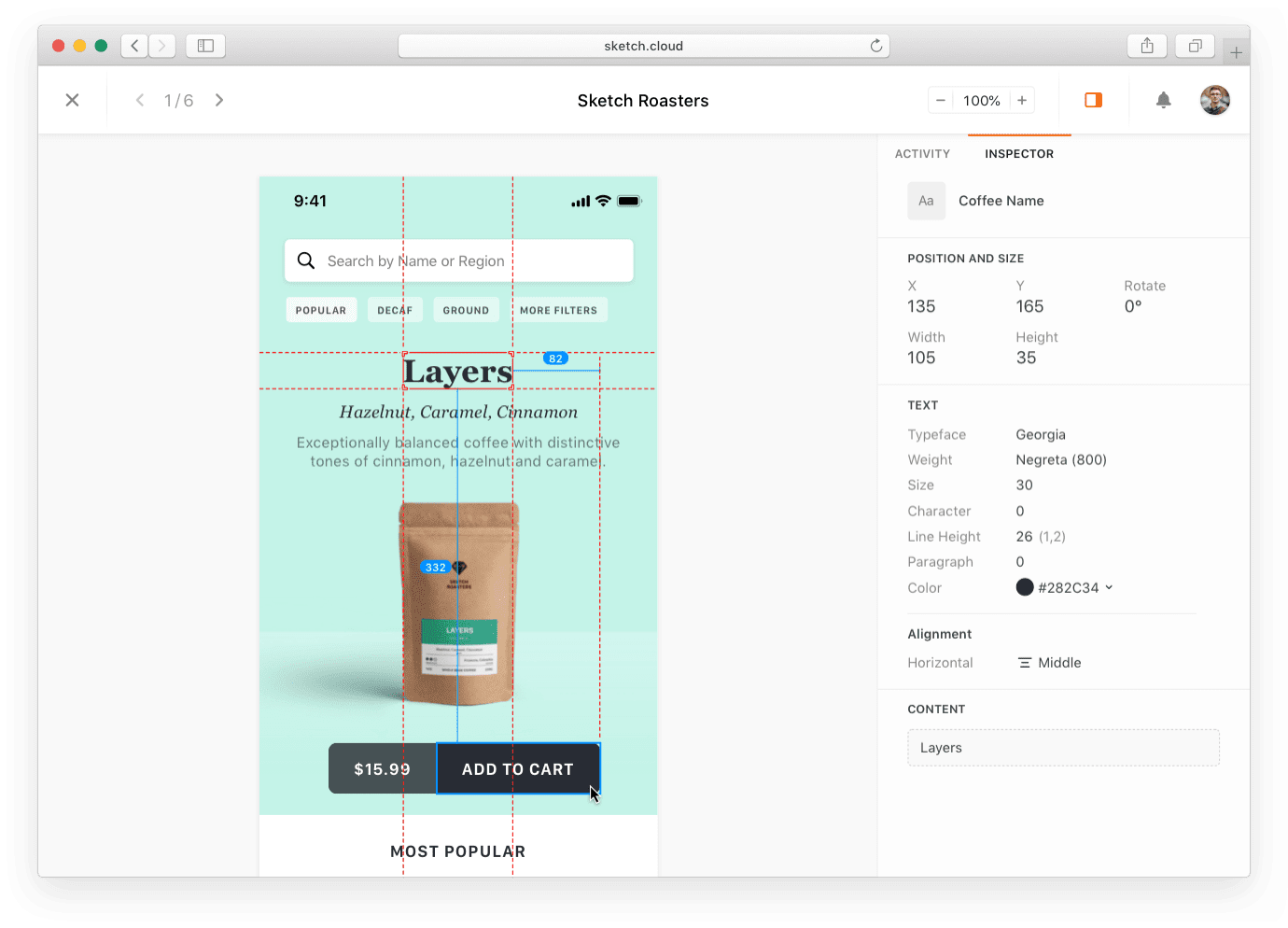
Similar Tools
Sketch Features
Sketch is a platform used by over 1 million people, from large teams to freelancers. The tool runs on MacOS, and there’s a free, full-feature trial for 30 days. There are licenses for individuals, and teams can add members one by one as needed. Education discounts are available, and you can also move your license to teams as your need to collaborate grows.
The features behind Sketch allow users to collaborate together faster with the ability to share files, workspaces and ideas quickly to work together or get feedback.
Three standout features of Sketch include:
- Design basics
- Components and design systems
- Prototyping and collaboration
Pros
- Work together on designs
- Stored in the cloud
- Freelancer plan (one-payment plan)
Cons
- Keyword shortcuts are not the same as photoshop
- Sketch is Mac-only, no PC support
Design Basics
Every design starts with the basics. Sketch was developed from the ground up to offer a robust design option that can go from the beginner to the advanced user. The platform includes numerous basic options:
- Vector editing. Use a variety of vector editing tools on your next project.
- Boolean operations. Utilize the power of boolean operations that allow for combining and editing during any stage of the design process.
- Pixel precision. Leverage the power of pixel-precision with the addition of zoom, snapping, smart guides and the ability to adjust layers rapidly.
- Exporting. Use the app’s export preview to quickly share the design with others. You can also create export presets quickly and easily.
Sketch starts with these basics and moves into a variety of other design-focused features:
- Grids and layouts that allow for precision columns, designs and lines.
- Resize constraints built into your design to make it easy to scale your designs up or down.
- Use advanced math operators to resize or change dimensions with the highest level of accuracy possible.
- Typography controls are offered, allowing you to have full control of OpenType fonts.
Once you’re fully accustomed to the design basics, it’s time to move into the components and design systems provided. These systems will allow you greater control over the designs that you create.
Components and Design Systems
When creating more advanced designs, you’ll find components and design systems in place that add power to your design creation. There are four main feature categories that work with these systems:
- Reusable components. Creating components once is a tedious task, and recreation can be time consuming. The ability to reuse components allows for rapid design creation. The powerful components can be used all throughout your project and updated in just one iteration. A single update will be spread across all usages of the component.
- Smart layout. Create smarter layouts by using symbols that automatically resize to fit your content. You can change the scale or proportion of your design, and all of the symbols will resize to look just as good as they did during the first creation of the symbol (before you doubled the size or shrunk it down).
- Text styles and document colors. Define text styles, allowing you to maintain a high level of consistency throughout your design. You can reuse these styles and document colors across the design and even share with others. Sharing allows teams to collaborate at a higher level while maintaining style and color across the project.
- Shared libraries. As projects grow, you can crate symbols, layer styles and text styles. Add these three items into your libraries so that everyone on the design team has access to them and can work together. Everyone can be kept up-to-date as the work evolves and enjoy the power of syncing between the shared library.
Components and design systems provide the power teams need to collaborate faster and more efficiently.
Prototyping and Collaboration
Sketch wants to make the entire prototyping and collaboration process as easy as possible. The team behind Sketch makes it easy to test out your ideas and get feedback in just a few rapid clicks.
The prototyping and collaboration category offers several powerful features, including:
- Prototyping. When you want to link your design to others or test out your ideas, create prototypes. Share all of your prototypes in your browser with the click of button, or try out your designs for yourself on your device.
- Cloud sharing. Keep your designs and entire workspace on the cloud. View the files on a browser from anywhere and also share all of these files with your team to get feedback, access and share.
- Handoff. Collaborate with developers with the powerful handoff feature. Link the designs to any developer, allowing them to view and export all elements.
You’ll also find a mirror feature that allows you to work on an iOS device without having to write any code.